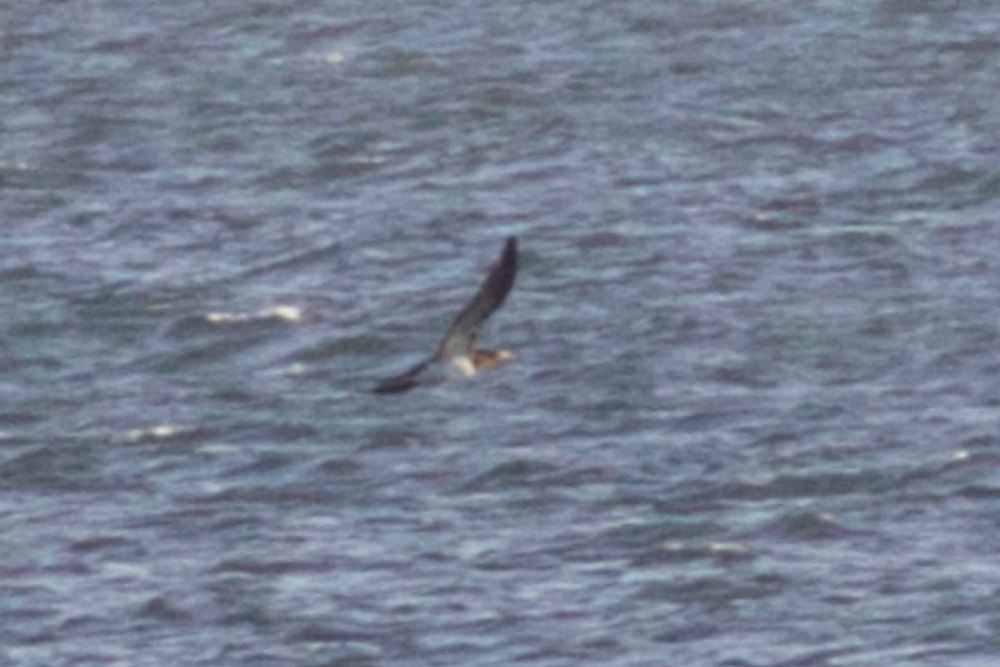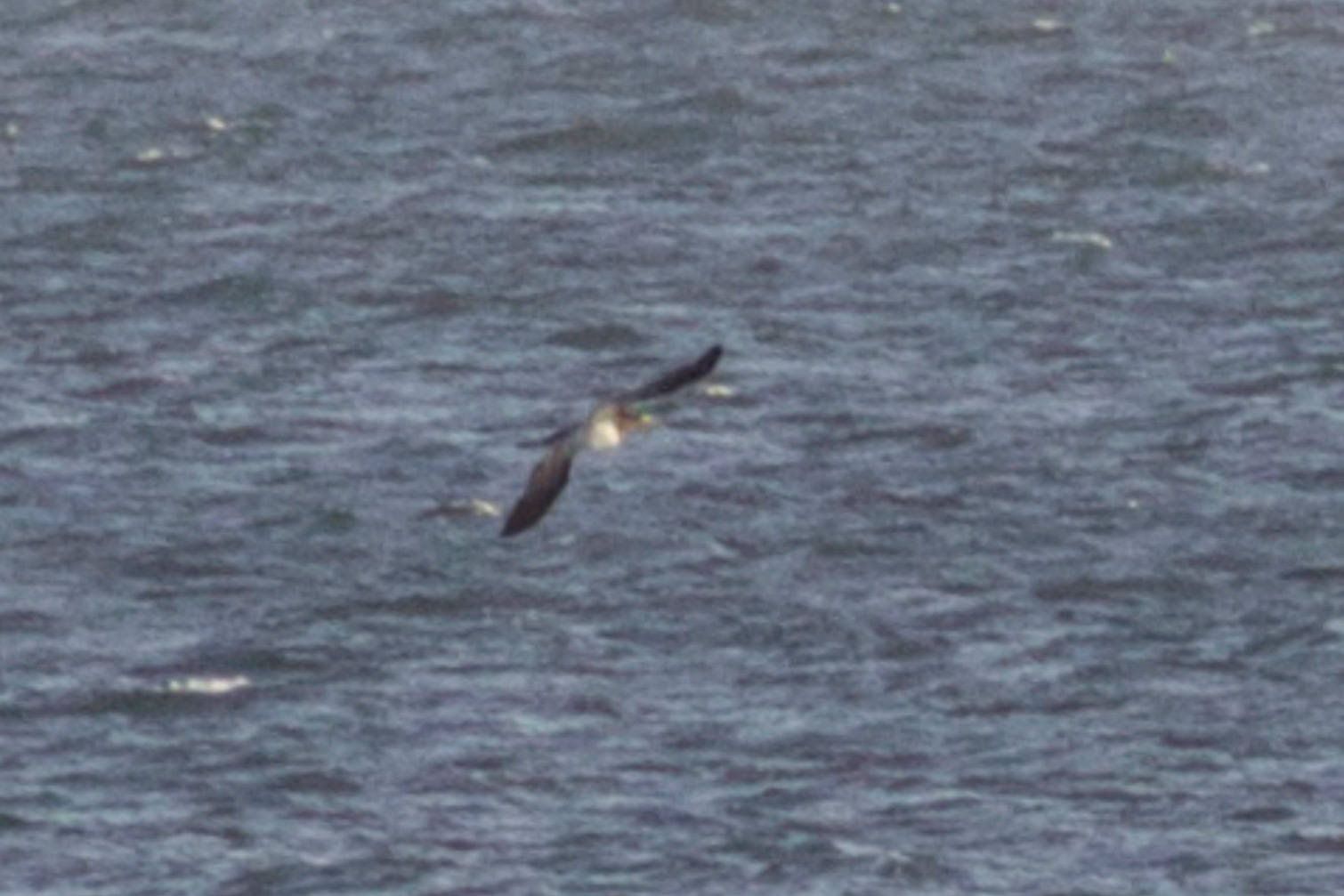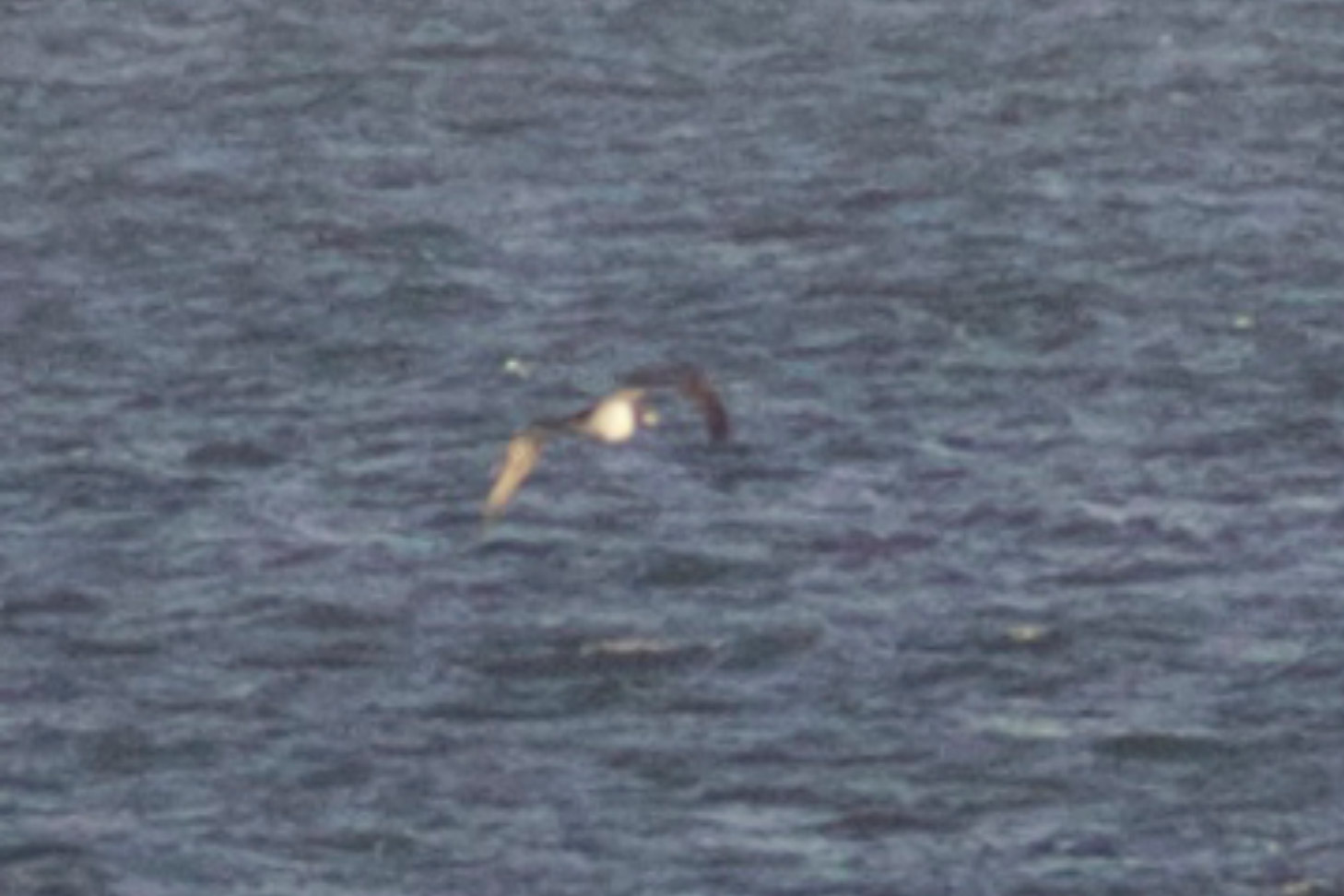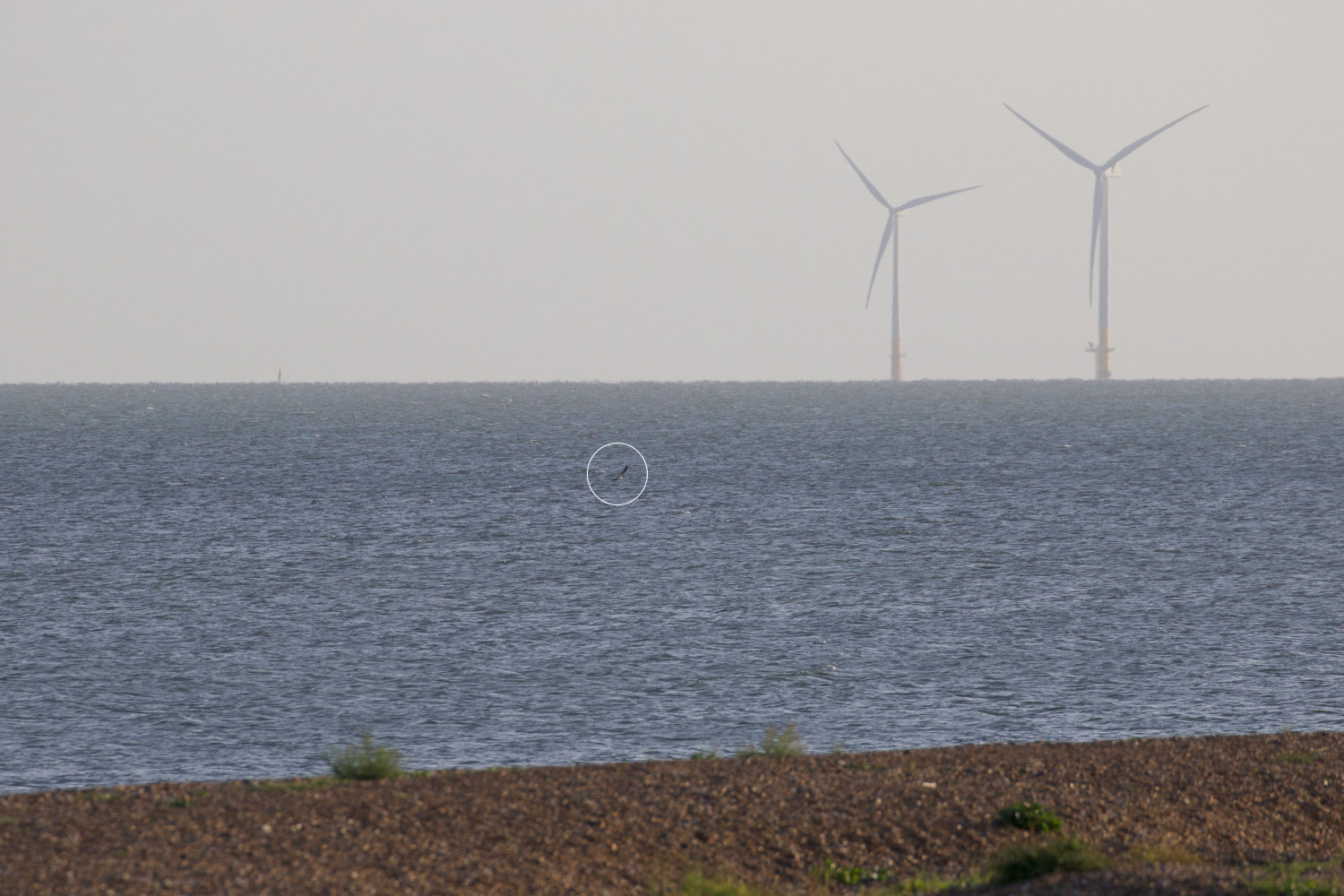It's frustrating when you don't see anything while out birding, but sometimes it can be even more frustrating when you do see something!
On the morning of 19 August, Andy Taylor, Ted Lee and I had just met up at our local patch of Long Rock at Swalecliffe, on the North Kent coast. It had been quiet lately, so flocks of 10 and seven Whimbrel heading west and three Common Redshanks on the beach seemed a good start.
Just after 7 am, I saw a large, dark bird flying east, low over the sea, a few hundred metres offshore (ie fairly close). Through binoculars, its shape recalled Northern Gannet and the dark plumage suggested a juvenile. I soon got onto it with the 'scope but was shocked to see that the belly was pure white and contrasted sharply with the dark breast, neck and head.
It was a very neat bird and showed no signs of white elsewhere (although we didn't see the underwing in the field) as it glided by, with the all-dark upperparts not interrupted by any pale markings. I shouted to Andy to get on the bird. He was equally shocked, but had the presence of mind to fire off a few shots – although, by this point, the bird was heading east into the light. The bill stood out as pale.

Apparent Brown Booby, Swalecliffe, Kent, 19 August 2019. In this image, the sharply demarcated breast band is apparent, as well as the white underparts and white underwing. The ivory-coloured bill is also clear and, with a bit of imagination, bill structure and even the pale face mask appear to be discernible (Andy Taylor).
The photos, albeit very distant, confirmed what we had seen, while also revealing a pale underwing. Taken at a poor angle in poor light with the bird flying away, they do not show the stark contrasts we saw as the bird flew by us initially. Andy and I both wondered at the time if it could be a Brown Booby. Our concern was whether an immature Northern Gannet – and it could only be a young bird – could somehow replicate these striking plumage characteristics. However, in all our years of gannet-watching at Swalecliffe, neither of us had seen anything close to resembling this bird.

Apparent Brown Booby, Swalecliffe, Kent, 19 August 2019 (Andy Taylor).

Apparent Brown Booby, Swalecliffe, Kent, 19 August 2019. In this image, the dark chocolate-brown colour of the neck appears distinctive as it catches the light, as well as the white underparts and underwing on the bird's right-hand side (Andy Taylor).
Others have commented along the same lines as us. Birds of the Western Palearctic describes "the line of demarcation across chest (is) sharply defined and diagnostic" in Brown Booby. We compared to the illustration of a first-summer Northern Gannet in the Collins Bird Guide, but that was pale chested. Also, we found a report of a bird seen in Portugal earlier this year that had originally been identified as Brown Booby, but was in fact a Northern Gannet. That bird had a white rump patch, as all Northern Gannets have, and a dark underwing.

By the time Andy took a few images, the bird had passed well to the east and was going away, into the light. This image has barely been cropped to offer context, with the bird circled (Andy Taylor).
We have received, or seen on social media, a lot of comments that range from "definitely a Brown Booby" to "very interesting", while some have tried to compare photos with others taken in very different light conditions.
It was intriguing to discover that a Brown Booby had been seen two years ago, almost to the day, in The Netherlands and Germany. Even more surprisingly, seven days after our sighting, one was found in Cornwall. However, the plumage of that bird appears visibly worn in photos and therefore could well be a different bird.

